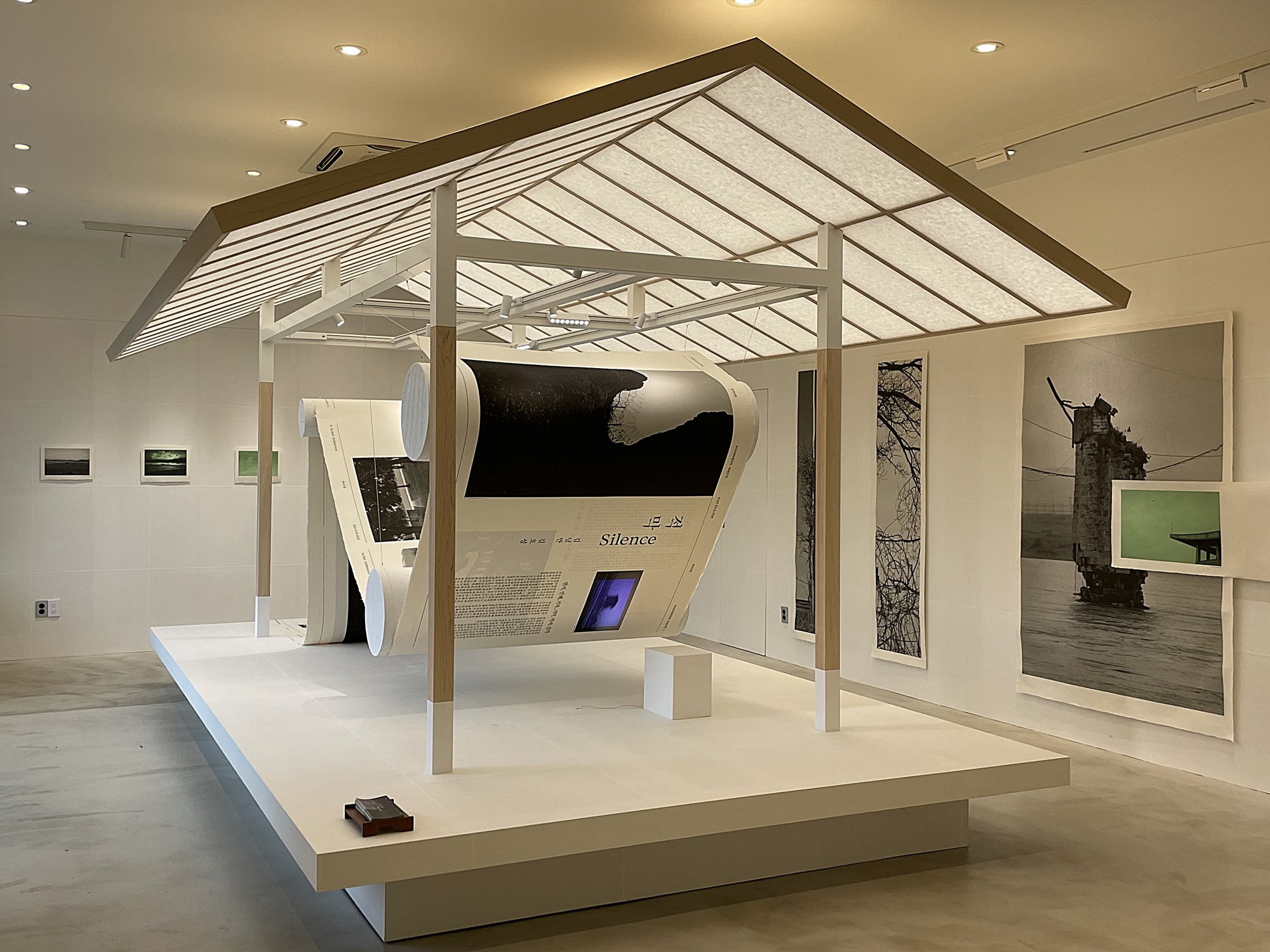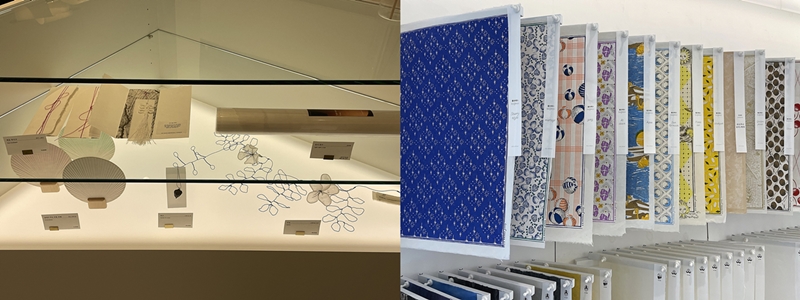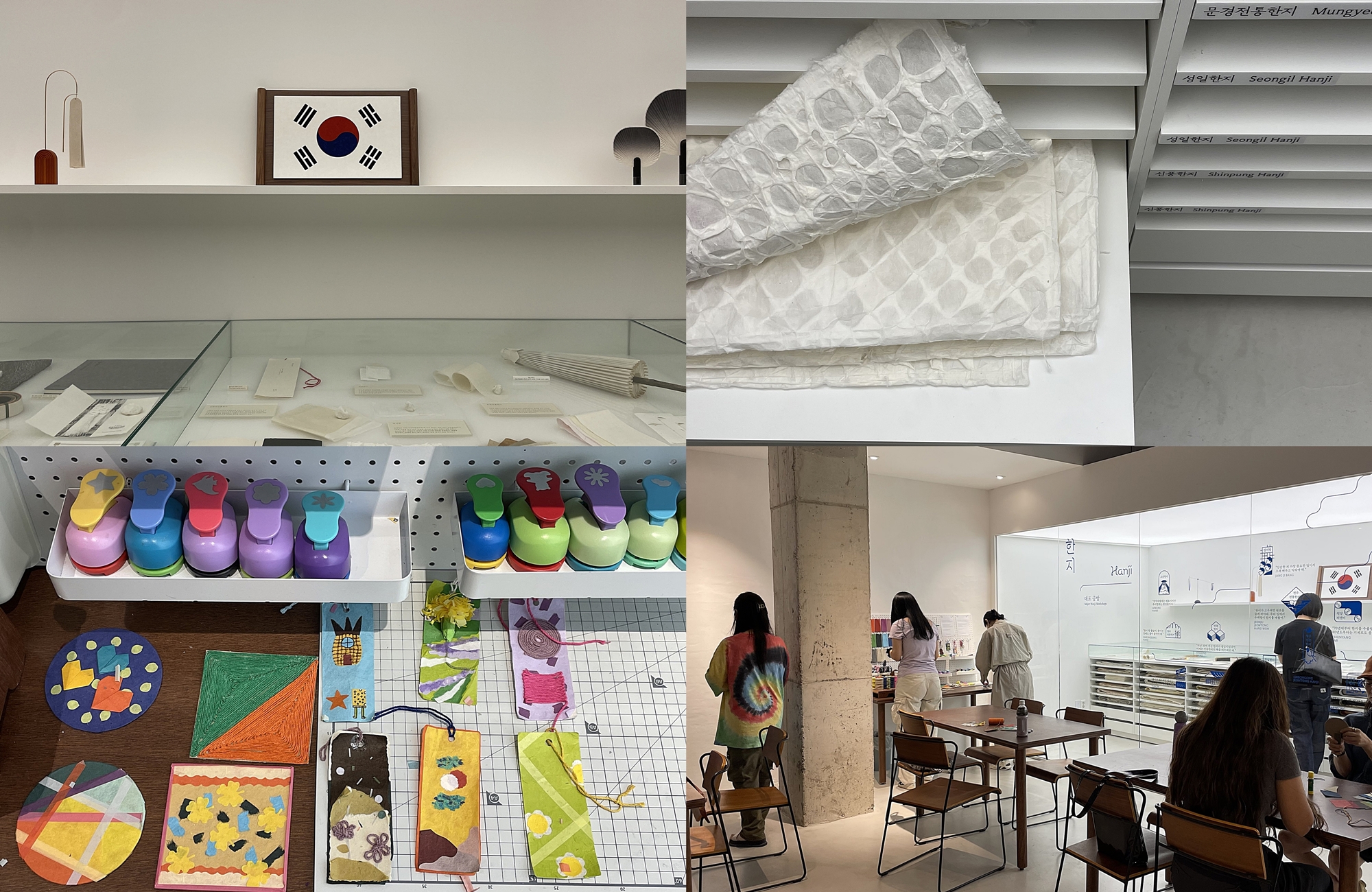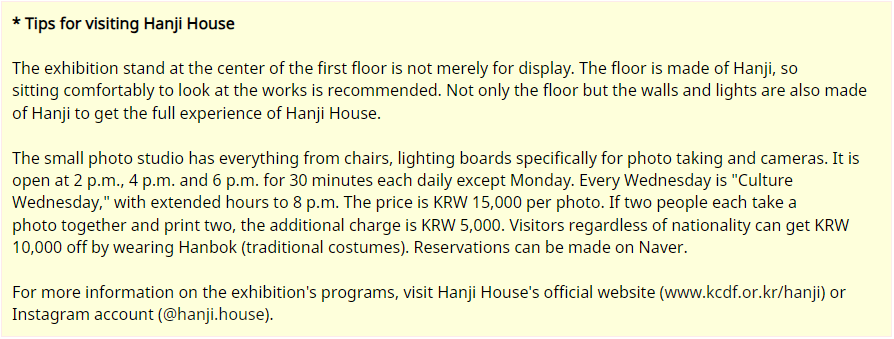Information Center
- Main page
- Information Center
- Government News
Government News
- Source
- KOREA.net
- Date
- 2024.07.10

The exhibition "Silence: The Memory of Generation" on the first floor of Hanji House in Seoul displays photos printed on Hanji (traditional paper).
By Lee Dasom
Early July sees the rainy season begin. A Korea.net staff writer leaves Exit 2 at Anguk Station in Seoul and arrives at a building to escape the humid and hot weather.
As soon as she enters, a cool breeze from the air conditioner cools off her sweat. A single glance shows a neat and compact place with soft and calming music flowing. This facility resembling a small gallery is Hanji House, named after the nation's traditional paper.
Formerly Hanji Culture and Industry Center, the venue was renamed in May 2020 to promote Hanji, a traditional heritage, both at home and abroad.
"We reorganized the space and renamed it Hanjigaheon (Hanji House) to overcome the spatial inefficiency of the center and expand its functions," said Hwang Moonhee, project manager at the Korea Craft and Design Foundation (KCDF). "We selected the English name Hanji House to allow easy recognition by foreign visitors."
The collaborative exhibition "Silence: The Memory of Generation" at the center of the first floor and its walls feature works on Hanji prints by photographers Nyeong-man and Kim Ho-sung, who are father and son.
Opened on June 18, the day of the opening ceremony for Hanji House, the exhibition runs through Aug. 27. New displays are scheduled to be added in September and November.
Jung Yeun-Ju, another KCDF project manager, said guidance in English, Japanese and Chinese is provided for foreign visitors.

Products made of Hanji for sale are displayed on a wall and in front of Hanji House's first floor including Hanji posters with fancy illustrations and cute items such as postcards, bookmarks and fans.
After browsing on the first floor, the writer headed down to the first basement level, which was divided into three sections. A small photo studio allowed visitors to print on Hanji the photos they took, a Hanji Learning Center hosted interactive programs and workshops; and an archive room featured Hanji-related resources.
The archive room displayed Hanji and leading works made at 18 Hanji workshops nationwide run by Hanji masters designated national or municipal intangible cultural heritage.
Project manager Yang Solbi said on each workshop, "Certain places make colored Hanji and others thick Hanji by coloring the paper."
Visitors can take out each large drawer and touch Hanji to compare the characteristics and differences of each paper.
Hanji workshops, however, face practical problems.
"The number of workshops has dipped from 19 last year to 18 this year," Hwang said. "The artisans are older but nobody succeeds them, so their number is decreasing every year."
She urged the need not only for interest in Hanji but also for protecting and passing it on.
After exploring the archive room, the writer walked into Hanji Learning Center, which was packed with visitors attending a reservation-only interactive program. They made small items such as keychains and bookmarks out of Hanji.
The table there had the tools needed to make items and a brochure in English on the program, making it easy for foreign visitors to participate. Reservations for the free program can be made on Naver, Korea's largest web portal.

The top photo shows the archive room on the first basement floor of Hanji House featuring items such as the Taegeukgi (national flag) and umbrella made of Hanji. The bottom picture depicts participants making items out of Hanji at the Hanji Learning Center.
Earlier on March 31, the Korea Heritage Service applied to register traditional knowledge, technology and cultural practices of Hanji production with UNESCO's Intangible Cultural Heritage of Humanity. The final decision on inscription will come in December 2026 at UNESCO's Convention for the Safeguarding of the Intangible Cultural Heritage.
"The Korea Crafts and Design Foundation will make and disseminate a video to promote Hanji abroad," Hwang said. "We will hold joint international exchange workshops at this place."
"Our goal is to promote traditional Hanji culture not only at home but also overseas."

dlektha0319@korea.kr